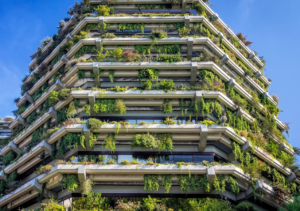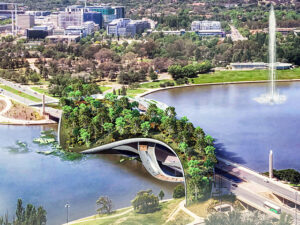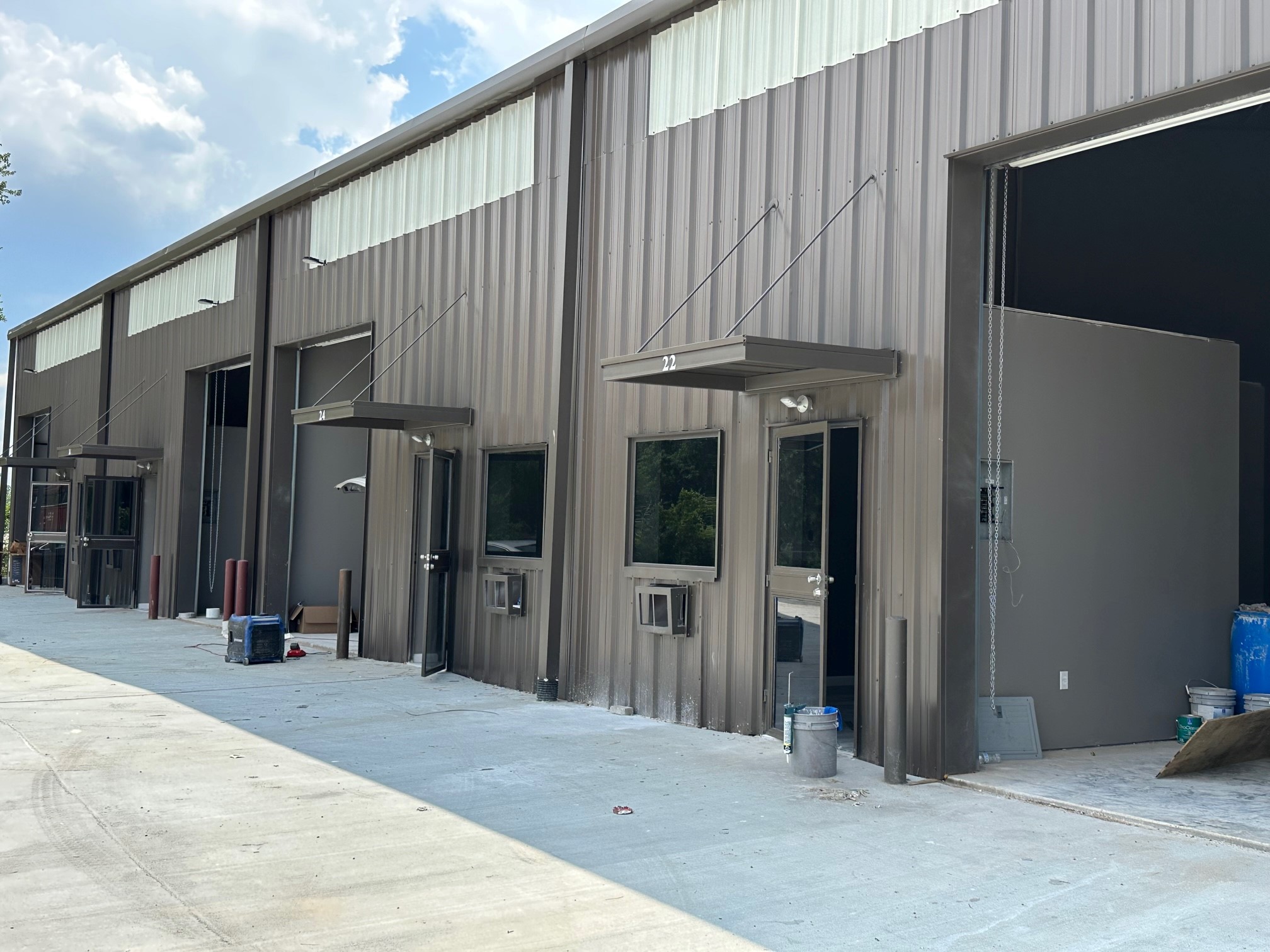How are Cities Becoming More Sustainable?
 Many cities around the world are implementing new policies and practices to promote sustainability in the urban environment. These initiatives are intended to reduce the carbon footprint of cities, encourage sustainable actions, and increase overall quality of life, otherwise known as green cities. For example:
Many cities around the world are implementing new policies and practices to promote sustainability in the urban environment. These initiatives are intended to reduce the carbon footprint of cities, encourage sustainable actions, and increase overall quality of life, otherwise known as green cities. For example:
- Vertical forests – The most famous vertical forest is located in Milan, Italy. Vertical forests take up less horizontal real estate than parks and can be used as living spaces. This can make them ideal for use in large, compact cities. Additionally, adding vegetation to the urban environment can have air-quality benefits as the plants would take in carbon dioxide and release oxygen. Nanjing, China also features some impressive vertical forests. As an added bonus, these ecofriendly marvels also act as nature’s way of purifying the air and reducing HVAC running costs.
- Encouraging bicycling – Copenhagen is considered one of the greenest cities in the world. They have many practices that contribute to this label, but one of the most stand out features of the capital city of Demark, is the popularity of bicycling. By designing cities with bicycling and public transportation in mind as opposed to individual transportation and vehicle ownership, urbanites and by extension cities can reduce their carbon footprints. Encouraging biking instead of driving can manifest in many forms including safe and secure bicycle parking, abundant and extensive bike lanes, and even bicycle only roads and paths. Designing cities around this mode of transportation also allows for citizens to reach their jobs or entertainment destinations swiftly.
- Public transportation – In situations where bicycling or walking is not an option, green cities encourage using energy efficient public transportation. This is not only because public transportation can transport more people at a time resulting in less carbon emissions, but also because public transportation can be maintained and monitored by the city thereby ensuring that the vehicles used are as eco-friendly as plausible.
- Energy efficiency – Most if not all buildings in green cites should be designed to be energy efficient. Vertical forests provide additional layers of energy efficiency.
- Reliable and accessible recycling programs – Green cities typically feature reliable and accessible recycling programs that can perform on a large scale. This means taking in and recycling various materials at a quick and efficient rate. While many places offer recycling programs, they are not always accessible to everyone, but in green cities, this would theoretically change. Green cities may also offer recycling incentives.
- Emphasis on green energy – A key feature of green cities is a focus on green energy sources. Programs like LEED (Leadership in Energy and Environmental Design) are taking renewable energy to a new scale by partnering with cities around the world to build and design LEED certified waste, water, energy, and transportation systems as well as buildings.
- Refill shops – A refill shop is a store where individuals can refill reusable containers with non-packaged goods and pay by weight. This can be anything from food such as rice, oats, coffee and dozens of other things, to hygiene products like shampoo and bodywash.
Where are Green Cities?
There are sustainable cities all around the world, showcasing the fact that location does not have to be a determining factor. Famous examples of green cities include:
Copenhagen, Denmark
Copenhagen is continuously ranked as one of the greenest cities on Earth, and for good reason. All the way back in 2009, Copenhagen set a goal to become the first carbon neutral city on the planet by 2025. Unlike the many cities and countries that set goals and make promises to become more sustainable, Copenhagen got to work. With a focus on energy consumption, green transportation, energy production, and city government initiatives, Copenhagen city administration started making changes ranging from encouraging bicycling as a transportation alternative to switching over to a more energy efficient heating and cooling system. By all accounts, the initiatives are working.
 Canberra, Australia
Canberra, Australia
Canberra, Australia was the first mainland Australian city to run off of 100% renewable energy and that is far from their only achievement on their journey to a more sustainable future. Some studies show that more than 80% of Canberra’s transportation system is energy efficient. Like Copenhagen, Canberra encourages alternative transportation to traveling by car. Not only did Canberra take (and is still taking) important steps to becoming greener and more sustainable, but it is also inspiring other Australian cities to do the same.
Curitiba, Brazil
Curitiba was not always a green city and stands as a shining example as to how a city can transition to becoming more sustainable. As the greenest city in Brazil, Curitiba is responsible for planting hundreds of thousands of trees, is able to recycle the majority of its waste, and has a reliable, lower carbon emission public transportation system.
Vancouver, Canada
Vancouver, Canada is one of the greenest cities in North America and generates most of its power supply from hydroelectric dams and is close to reaching 100% of all energy used being from renewable sources. This shining example of progressive innovation, also promotes green building, transportation alternatives, renewable energy, recycling, and sustainability education. With plans and policies in place to reduce the city’s carbon emissions even farther, Vancouver is leading North America on the journey to a more sustainable planet.
Conclusion
Green cities are cities that have taken the initiative to become more sustainable. From encouraging alternative transportation to using renewable energy sources, these cities are changing our planet and inspiring change one policy at a time. With green cities on almost every continent in a variety of countries, isn’t it about time that the Unites States joined the fight? Where do you see the first green city in the US being? Where do you think it should be?






